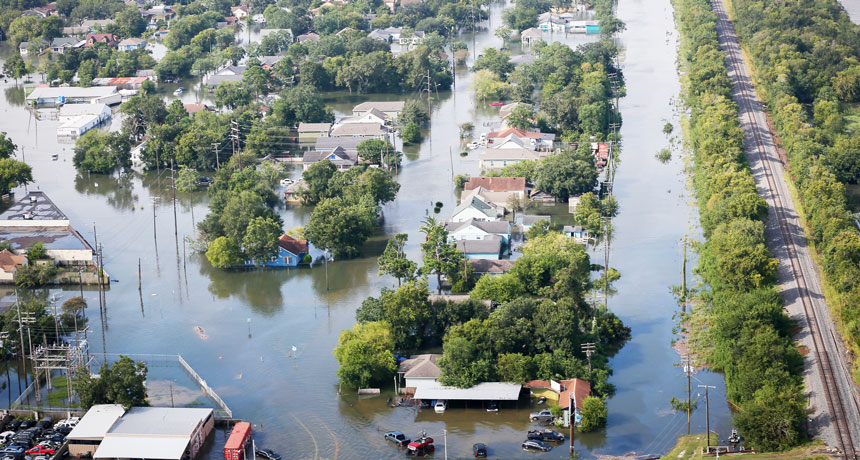Here’s how much climate change could cost the U.S.

The United States is poised to take a powerful economic hit from climate change over the next century. Heat waves, wildfires, extreme weather events and rising sea levels could cost the country hundreds of billions of dollars in lost labor, reduced crop yields, health problems and crumbling infrastructure.
A report authored by hundreds of U.S. climate scientists from 13 federal agencies presents a stark picture of the country’s fate due to climate change. The Fourth National Climate Assessment, released November 23, predicts the U.S. economy will shrink by as much as 10 percent by the end of the century if global warming continues apace.
A separate report released November 27 by the United Nations Environment Programme reveals that in 2017, global emissions of carbon dioxide — a major driver of warming — rose for the first time in three years. That suggests that the nations that promised to curb emissions as part of the historic 2015 Paris agreement are falling short (SN: 1/9/16, p. 6).
It’s unclear what effect, if any, the reports will have on the U.S. government’s strategy on dealing with climate change and its consequences. President Donald Trump has previously announced he would withdraw the United States from the Paris agreement (SN Online: 6/1/17). And on November 26, Trump told reporters that he had read “some of” his scientists’ report. “It’s fine,” he said. But when it comes to the dire predictions of economic losses, he added, “I don’t believe it.”
The National Climate Assessments are mandated by Congress and produced every four years, focusing on the risks of climate change specifically to the United States. What’s different about the new report compared with previous editions is its precision about the risks to different parts of the U.S. economy, putting a price tag on the potential losses in agriculture, trade and energy generation.
To put a dollar value on bad air quality or worsening heat waves, for instance, scientists try to assess the measurable impacts of those issues — for example, the number of days of work or school missed, or the number of doctors’ visits triggered (SN Online: 10/14/18).
The more-than-1,600-page report includes detailed examinations of the effects of climate change on the country’s different regions. People living in the northeastern United States, for example, will be among the hardest hit by deaths due to poor air quality and temperature extremes by the end of the century. Labor losses in the southeastern United States are the highest of all regions, as are projected damages to roads and bridges, the report found.
Meanwhile, the Midwest will see the highest increase in premature deaths from increased amounts of ozone. And the Southwest, which includes California in these analyses, will suffer from extreme heat, drought and an increase in future cases of the mosquito-borne West Nile virus.
The report estimates that cumulatively the country will spend $23 billion responding to wildfires by the end of the century, even if greenhouse gas emissions are modestly reduced. The Southwest will bear the brunt of that impact, spending $13 billion dollars.
The report also details the many ways in which climate change is already hurting the country economically. For example, three storms that made landfall during the 2017 Atlantic hurricane season — Harvey, Irma and Maria — together cost the United States at least $265 billion, according to the National Oceanic and Atmospheric Administration.
By continuing on its current trajectory of greenhouse gas emissions, the “business-as-usual” scenario, the United States will see the greatest losses, the assessments concludes. However, the report also considers climate impacts in an alternate future, in which the world has taken modest actions to curb greenhouse emissions, including using more carbon-neutral fuels and the growth of technological innovations to remove carbon dioxide from the atmosphere (SN Online: 10/20/18).